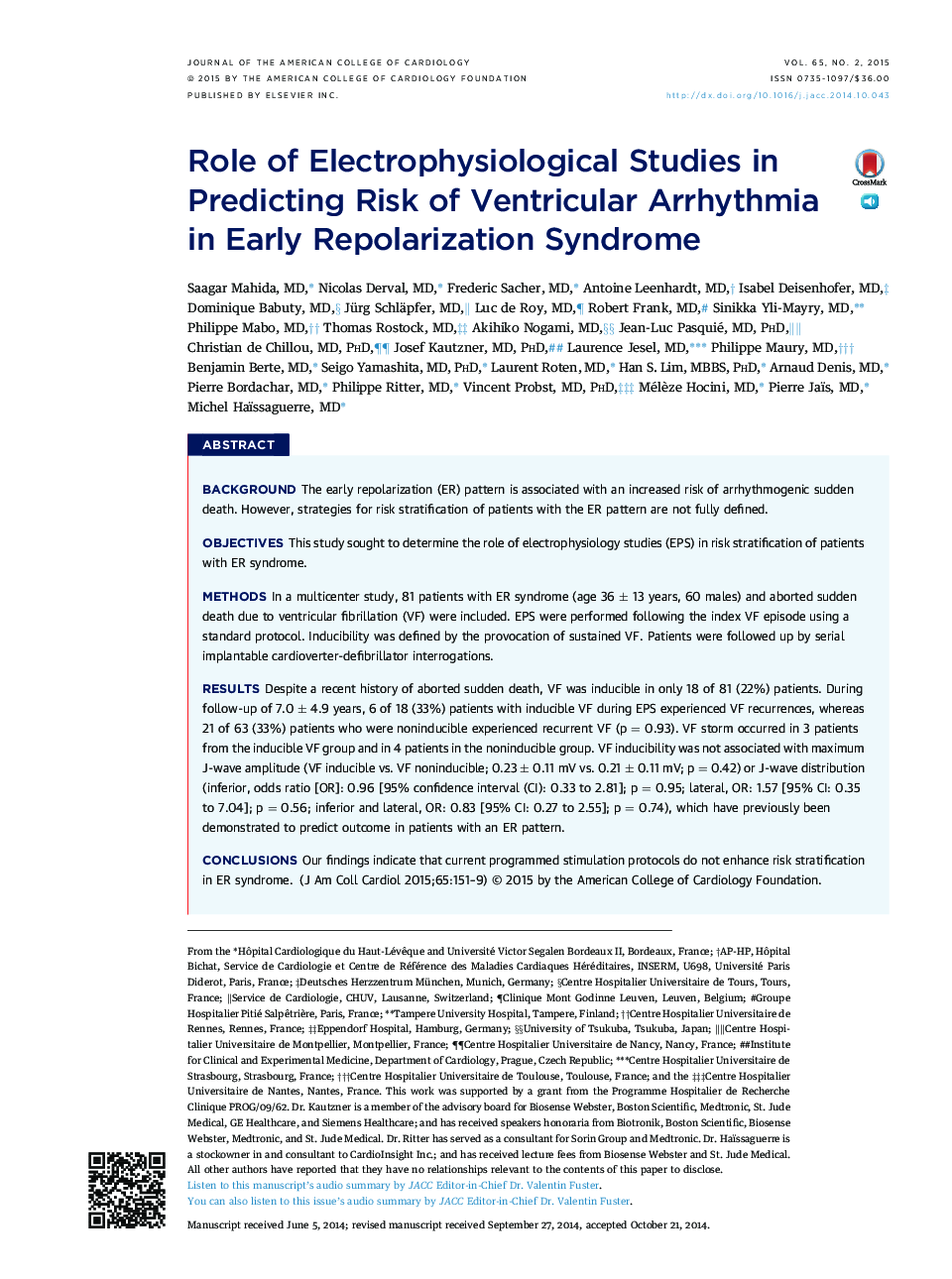| Article ID | Journal | Published Year | Pages | File Type |
|---|---|---|---|---|
| 2944234 | Journal of the American College of Cardiology | 2015 | 9 Pages |
BackgroundThe early repolarization (ER) pattern is associated with an increased risk of arrhythmogenic sudden death. However, strategies for risk stratification of patients with the ER pattern are not fully defined.ObjectivesThis study sought to determine the role of electrophysiology studies (EPS) in risk stratification of patients with ER syndrome.MethodsIn a multicenter study, 81 patients with ER syndrome (age 36 ± 13 years, 60 males) and aborted sudden death due to ventricular fibrillation (VF) were included. EPS were performed following the index VF episode using a standard protocol. Inducibility was defined by the provocation of sustained VF. Patients were followed up by serial implantable cardioverter-defibrillator interrogations.ResultsDespite a recent history of aborted sudden death, VF was inducible in only 18 of 81 (22%) patients. During follow-up of 7.0 ± 4.9 years, 6 of 18 (33%) patients with inducible VF during EPS experienced VF recurrences, whereas 21 of 63 (33%) patients who were noninducible experienced recurrent VF (p = 0.93). VF storm occurred in 3 patients from the inducible VF group and in 4 patients in the noninducible group. VF inducibility was not associated with maximum J-wave amplitude (VF inducible vs. VF noninducible; 0.23 ± 0.11 mV vs. 0.21 ± 0.11 mV; p = 0.42) or J-wave distribution (inferior, odds ratio [OR]: 0.96 [95% confidence interval (CI): 0.33 to 2.81]; p = 0.95; lateral, OR: 1.57 [95% CI: 0.35 to 7.04]; p = 0.56; inferior and lateral, OR: 0.83 [95% CI: 0.27 to 2.55]; p = 0.74), which have previously been demonstrated to predict outcome in patients with an ER pattern.ConclusionsOur findings indicate that current programmed stimulation protocols do not enhance risk stratification in ER syndrome.
